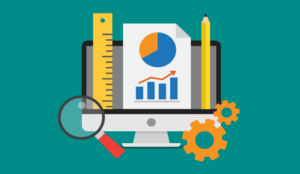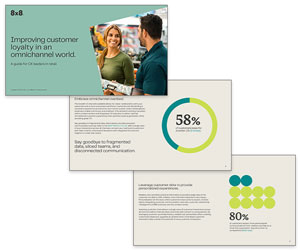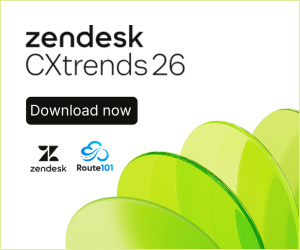Jeremy Watkin of 8×8 discusses the best uses for live monitoring in the contact centre.
I’m not sure why it’s the case, but when I think about the ability to live monitor contact centre agents, I picture a television with an unending stream of customer interactions, almost like contact centre reality TV.
Move over Kim Kardashian, because I think I just came up with the worst show idea yet.
In all seriousness, what contact centre leader has the time and attention span to monitor their agents to that degree?
Taking a quick step back, when I talk about live monitoring I’m referring to the ability to listen to call audio for agents and view their desktop activity.
While many contact centre platforms record and save audio and video, live monitoring allows you to see and hear the activity in real time.
Also, it is typically paired with whisper functionality to speak to the agent without the customer hearing, and barge functionality to take over the call altogether.
In this article, I’ll share 8 uses for live monitoring that don’t necessarily resemble a 24-hour news cycle but do enable contact centre leaders to get the most from the feature.
1. When Handling an Escalated Interaction
Sitting in a contact centre, it’s pretty easy to tell when a call isn’t going well. It’s as if all background noise fades away and all you hear are phrases like:
- “Sir, I’m sorry you feel that way.”
- “Ma’am, I’d be happy to help you with this if you can just calm down.”
- “If you continue to use that language, I’ll have to end this call.”
Or perhaps you’ve been tipped off to a difficult interaction in a group chat and want to hear or read what the customer is saying.
Tuning in with live monitoring and gaining some context before joining or taking over the interaction can help you as a supervisor to calm the customer down and arrive at a resolution more quickly.
2. When It Means Saving a Customer
Sometimes when customer interactions become heated, you run the risk of losing the customer altogether.
Using the whisper functionality to guide the agent to the best resolution can help turn the entire interaction around and take steps toward restoring the customer’s faith in the company.
3. When Monitoring New Agents
What would you think of a parent who purchased a first bicycle for their 3-year-old, showed them a 30-minute instructional video on how to ride a bike, and then expected their child to ride perfectly without training wheels? That would be foolish, right?
In the same way, live monitoring makes it easier to monitor new agents during their first interactions with customers. And this can be done from anywhere — across the contact centre or across the world.
4. When New Agents Are Shadowing Experienced Agents
A common practice when agents complete training is for them to shadow more experienced agents. While it’s nice for them to sit next to the agent, that’s not always practical.
I once was tasked with building an internal customer service team for a start-up. We had new agents start out in a small office while tenured agents were remote.
In cases such as this, new agents can follow along using live monitoring and can learn as experienced agents interact with customers. And when the time is right, they can switch roles; now the experienced agent can observe the new agent.
5. When Coaching to Improve Metrics
Hypothetically speaking, you review the average handle time for your team and find that most of them complete their calls within six minutes, give or take a minute. But you find one agent is handling calls in 12 minutes.
Knowing there are opportunities for improvement, you monitor that agent’s desktop and spot areas where they can gain efficiency.
For example, you notice that instead of using and personalizing the pre-written email templates you’ve provided for sending post-call follow-up emails, this agent is writing each email from scratch.
Or perhaps the agent is navigating to other websites during customer interactions that have nothing to do with that interaction.
Whatever the reason, you will be able to spot these activities, record them, and review them with the agent.
6. When Optimizing Digital Channel Handling
Traditional live monitoring where you can hear call audio is great, but the ability to see the agent’s desktop takes it to the next level.
With the significant rise in digital channel usage (chat, email, SMS, and social), live monitoring can optimize your handling of chat conversations.
Since agents typically balance multiple conversations at once, seeing their screen is the best way to identify opportunities for efficiency.
7. When Optimizing Tool Usage
I once worked with my team to outline the steps to wrap up a call because our average wrap time was 3-4 minutes and we wanted to improve it to 2 minutes or less. We found it took agents a dozen clicks to select a call disposition and enter their call notes.
Also consider that, on average, agents have to navigate between 7 or more windows to resolve an issue for a customer.
By gaining visibility into the way agents use and navigate their applications, you can discover and share best practices for making them more efficient. And you can also improve technology to streamline the agent experience.
8. When You Need to Keep Agents on Task
In larger contact centres with defined workforce management schedules, it’s typical to have a real-time adherence (RTA) function.
RTA ensures that agents follow their schedules as closely as possible. This includes shift start and end time, breaks, lunches, meetings, and any other planned activities.
Regardless of the size of contact centre, it’s someone’s job to make sure agents adhere to their schedules.
Live screen monitoring gives leaders added insight if they suspect an agent isn’t on task.
As promised, none of these uses for live monitoring resembles a Keeping Up With the Kardashians marathon.
But they will significantly aid you in your quest to coach and develop your agents and improve the customer experience. Have I left any good use cases off this list?
Author: Robyn Coppell
Published On: 24th Jul 2020 - Last modified: 28th Jul 2020
Read more about - Guest Blogs, 8x8







































